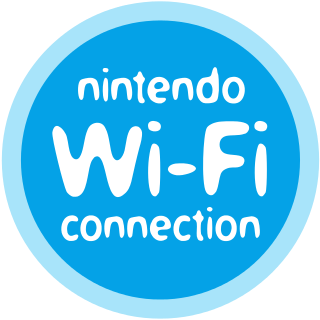
The Nintendo Wi-Fi Connection is a defunct online multiplayer gaming service run by Nintendo to provide free online play in compatible Nintendo DS and Wii games. The service included the company's Wii Shop Channel and DSi Shop game download services. It also ran features for the Wii and Nintendo DS systems.
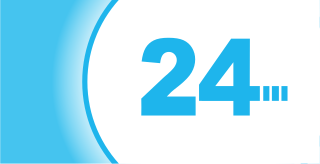
WiiConnect24 was a feature of the Nintendo Wi-Fi Connection for the Wii console. It was first announced at Electronic Entertainment Expo (E3) in mid-2006 by Nintendo. It enabled the user to remain connected to the Internet while the console was on standby. For example, in Animal Crossing: City Folk, a friend could send messages to another player without the recipient being present in the game at the same time as the sender.
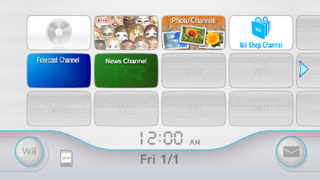
The Wii Menu is the graphical shell of the Wii and Wii U game console, as part of the Wii system software. It has four pages, each with a 4:3 grid, and each displaying the current time and date. Available applications, known as "channels", are displayed and can be navigated using the pointer capability of the Wii Remote. The grid is customizable; users can move channels among the menu's 48 customizable slots. By pressing the plus and minus buttons on the Wii Remote users can scroll across accessing empty slots.

The Wii Shop Channel is a discontinued digital distribution service for the Wii video game console. The service allowed users to purchase and play additional software for the Wii, including exclusive games, and games from prior generations of video games. The Wii Shop Channel launched on November 19, 2006, and ceased operations on January 30, 2019.

The Everybody Votes Channel was a Wii Menu channel that allowed users to vote in simple opinion polls and compare and contrast opinions with those of friends, family and voters around the globe.

A Mii is a customizable avatar used on several Nintendo video game consoles and mobile apps. The name Mii is a portmanteau of "Wii" and "me", referring to them typically being avatars of the players. Miis were first introduced on the Wii console in 2006 and later appeared on the DS, 3DS, the Wii U, the Switch, and various apps for smart devices such as Miitomo. Miis can be created using different body, facial and clothing features, and can then be used as characters within games on the consoles, either as an avatar of a specific player or in some games portrayed as characters with their own personalities. Miis can be shared and transferred between consoles, either manually or automatically with other users over the internet and local wireless communications.
WiiWare is a service that allowed Wii users to download games and applications specifically designed and developed for the Wii video game console made by Nintendo. These games and applications could only be purchased and downloaded from the Wii Shop Channel under the WiiWare section. Once the user had downloaded the game or application, it would appear in their Wii Menu or SD Card Menu as a new channel. WiiWare was a companion to the Virtual Console, which specializes in emulated games originally developed for other systems instead of original games.

The Wii system software is a discontinued set of updatable firmware versions and a software frontend on the Wii home video game console. Updates, which could be downloaded over the Internet or read from a game disc, allowed Nintendo to add additional features and software, as well as to patch security vulnerabilities used by users to load homebrew software. When a new update became available, Nintendo sent a message to the Wii Message Board of Internet-connected systems notifying them of the available update.

The Check Mii Out Channel, known as the Mii Contest Channel in Europe, Oceania and Japan, was a channel for the Nintendo Wii that allowed players to share their digital avatars, called Miis, and enter them into popularity contests.

The Nintendo DSi system software is a set of updatable firmware versions, and a software frontend on the Nintendo DSi video game console. Updates, which are downloaded via the system's Internet connection, allow Nintendo to add and remove features and software. All updates also include all changes from previous updates.
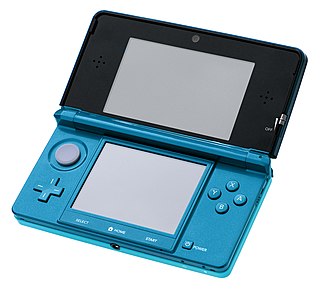
The Nintendo 3DS is a foldable handheld game console produced by Nintendo. The console was announced in March 2010 and unveiled at E3 2010 as the successor to the Nintendo DS. The system features backward compatibility with Nintendo DS video games. As an eighth-generation console, its primary competitor was Sony's PlayStation Vita.
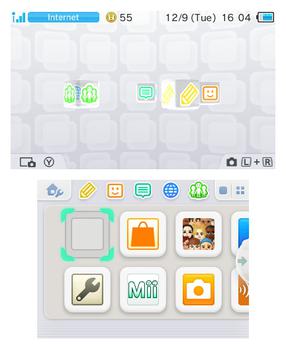
The Nintendo 3DS system software is the updatable operating system used by the Nintendo 3DS handheld system. The Nintendo Switch system software is believed to have evolved from the Nintendo 3DS system software.
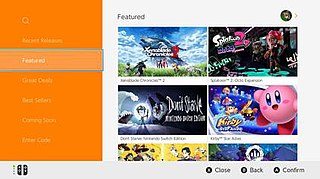
The Nintendo eShop is a digital distribution service for the Nintendo Switch, and formerly available via the Nintendo Network for the Wii U and Nintendo 3DS. The Nintendo eShop was first launched in June 2011 on the Nintendo 3DS via a system update that added the functionality to the HOME Menu. It is the successor to both the Wii Shop Channel and DSi Shop. Unlike on the Nintendo 3DS, the eShop was made available on the launch date of the Wii U, although a system update is required in order to access it. It is also a multitasking application, which means it is easily accessible even when a game is already running in the background through the system software, though this feature is exclusive to the Wii U and the Nintendo Switch. The Nintendo eShop features downloadable games, demos, applications, streaming videos, consumer rating feedback, and other information on upcoming game releases.
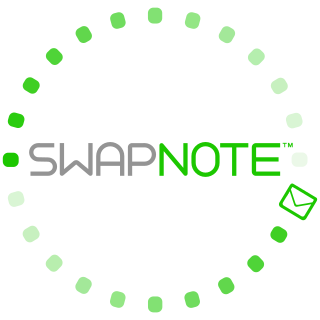
Swapnote, known as Nintendo Letter Box in PAL regions and Suddenly Exchange Diary in Japan, was a messaging application for the Nintendo 3DS family. Swapnote was released worldwide in December 2011 via the Nintendo eShop. It could have been downloaded at no additional cost and was pre-installed on newer systems. Swapnote was the successor to the PictoChat app for the Nintendo DS line.
The Nintendo Network is Nintendo's online service which provides online functionality for the Nintendo 3DS and Wii U systems and their compatible games. Announced on January 26, 2012, at an investors' conference, it is Nintendo's second online service after Nintendo Wi-Fi Connection. Former president of Nintendo Satoru Iwata said, "Unlike Nintendo Wi-Fi Connection, which has been focused upon specific functionalities and concepts, we are aiming to establish a platform where various services available through the network for our consumers shall be connected via Nintendo Network service so that the company can make comprehensive proposals to consumers."

The Wii U system software is the official firmware version and operating system for Nintendo's Wii U home video game console. Nintendo maintains the Wii U's systemwide features and applications by offering system software updates via the Internet. Updates are optional to each console owner, but may be required in order to retain interoperability with Nintendo's online services. Each update is cumulative, including all changes from previous updates.
Nintendo Network Service Database (NSD), formerly known as Wii no Ma, was a Japanese company. Originally created by Nintendo to provide digital entertainment as a service for Wii owners, the company has since been renamed.
SpotPass and StreetPass are communication systems first introduced in the Nintendo 3DS. SpotPass was later incorporated into the Nintendo 2DS, models of the New 3DS and New 2DS, and Wii U game consoles. SpotPass delivers content from the Internet to the consoles, and StreetPass uses local Wi-Fi functionality to exchange data between 3DS, 2DS, and Wii U systems.

TV no Tomo Channel: G-Guide for Wii was a Wii channel that featured an electronic program guide service developed by Nintendo and HAL Laboratory and operated by G-Guide.
Demae Channel was a Wii channel that featured a food delivery service developed by Nintendo and Denyusha and operated by Demaecan. It was launched on 26 May 2009, exclusively in Japan, and it was available as a free download on the Wii Shop Channel. In addition, a Wii U version was released on 8 August 2013.














